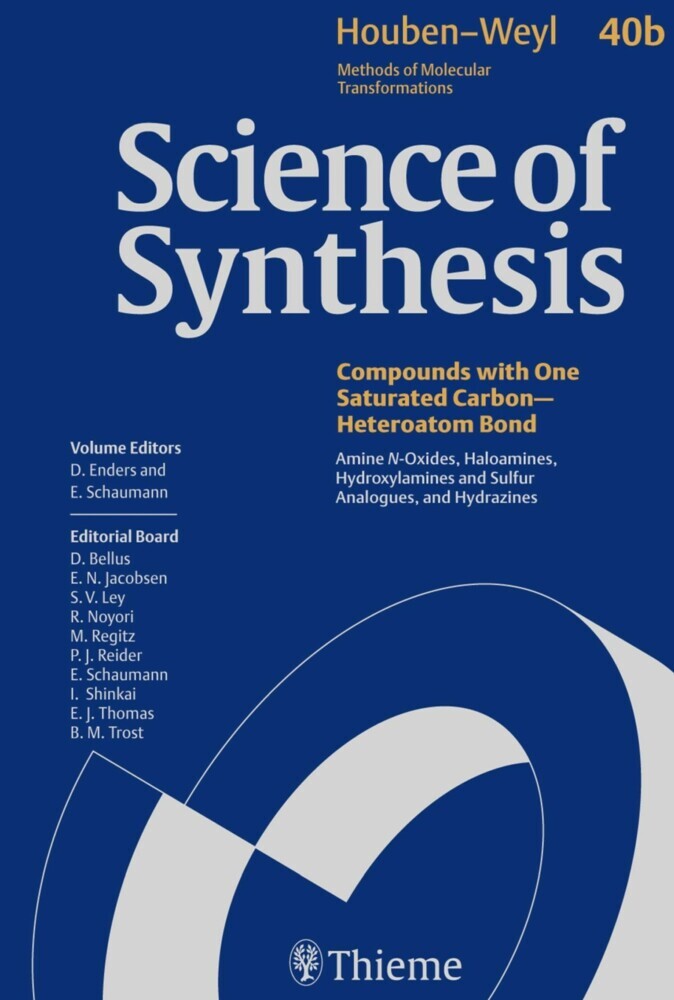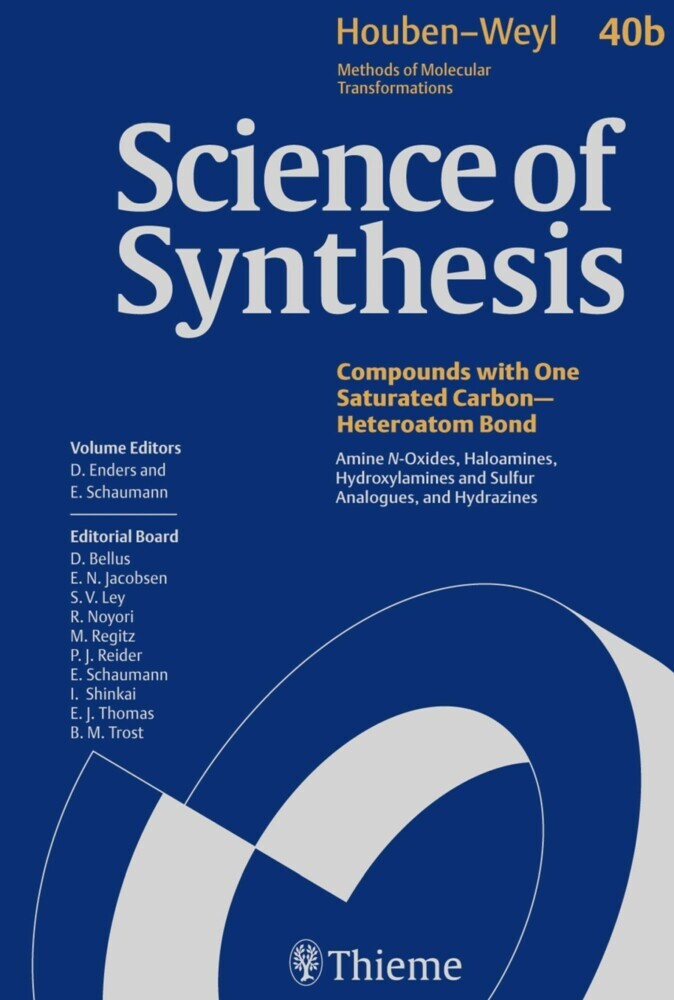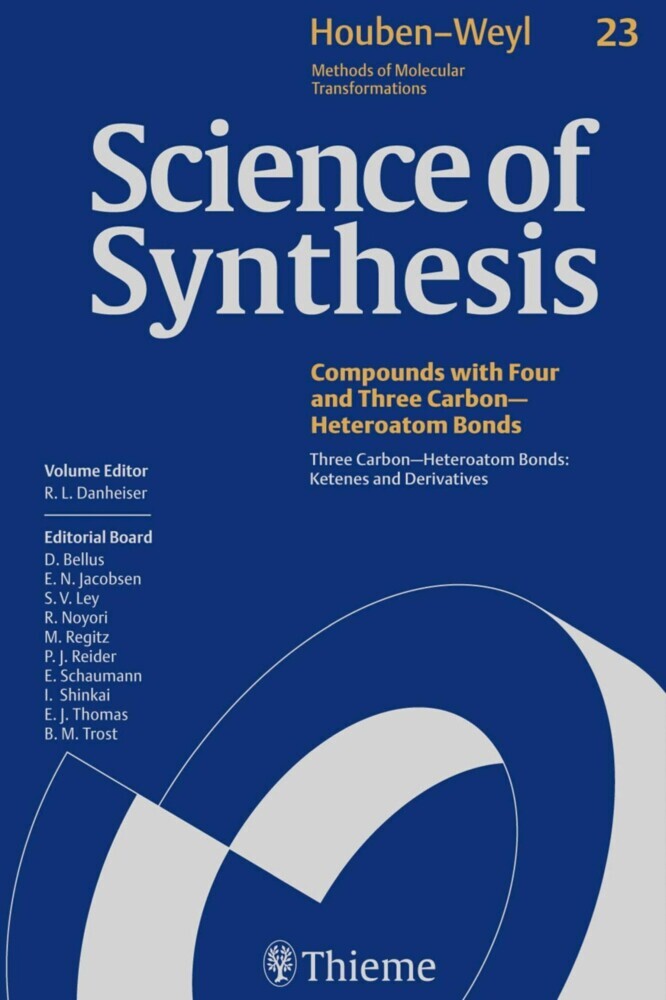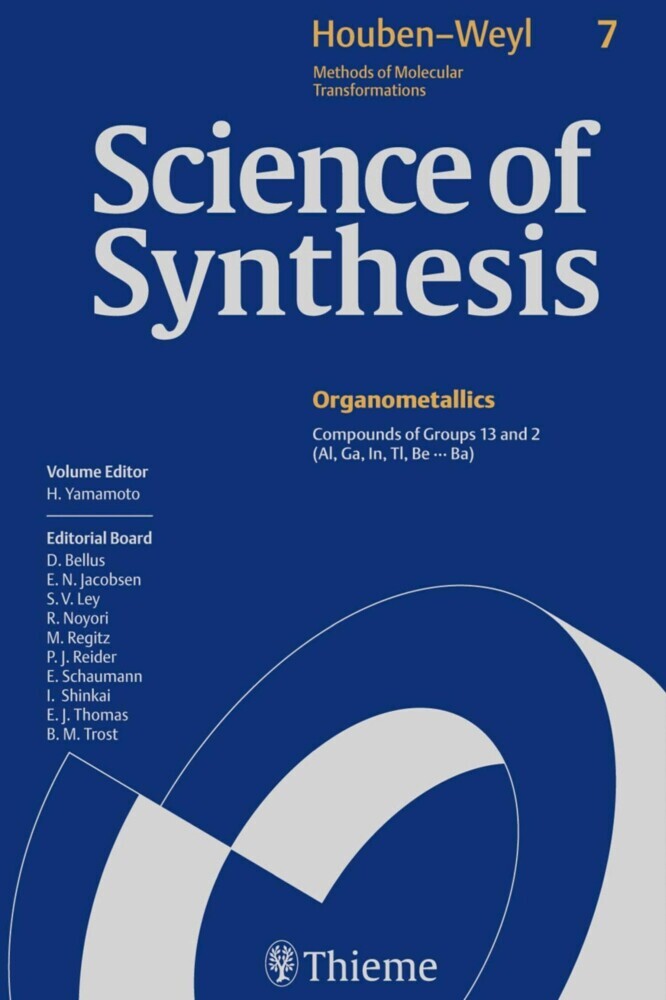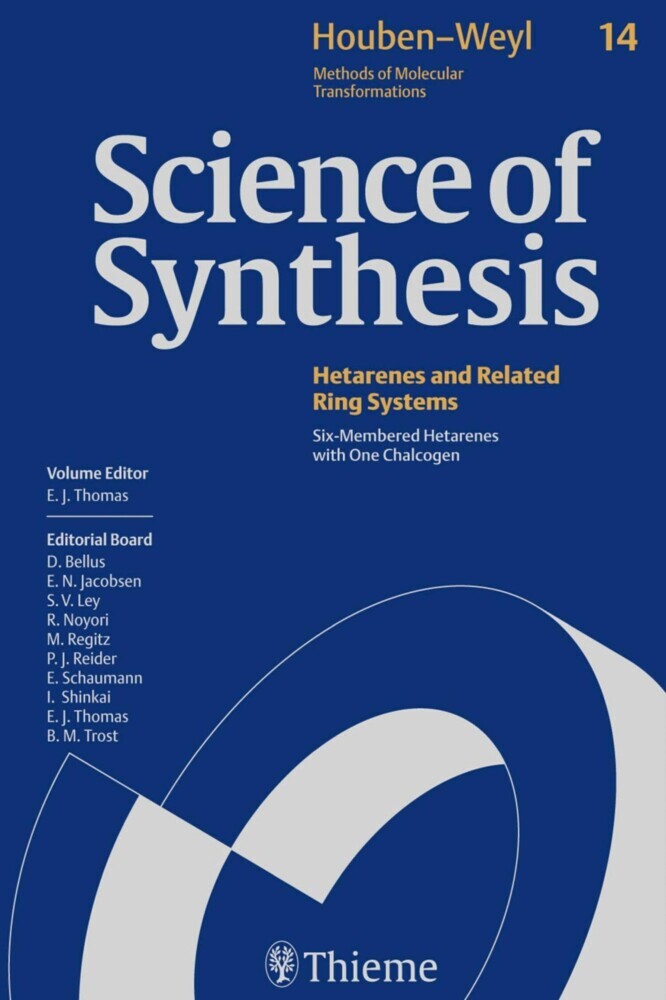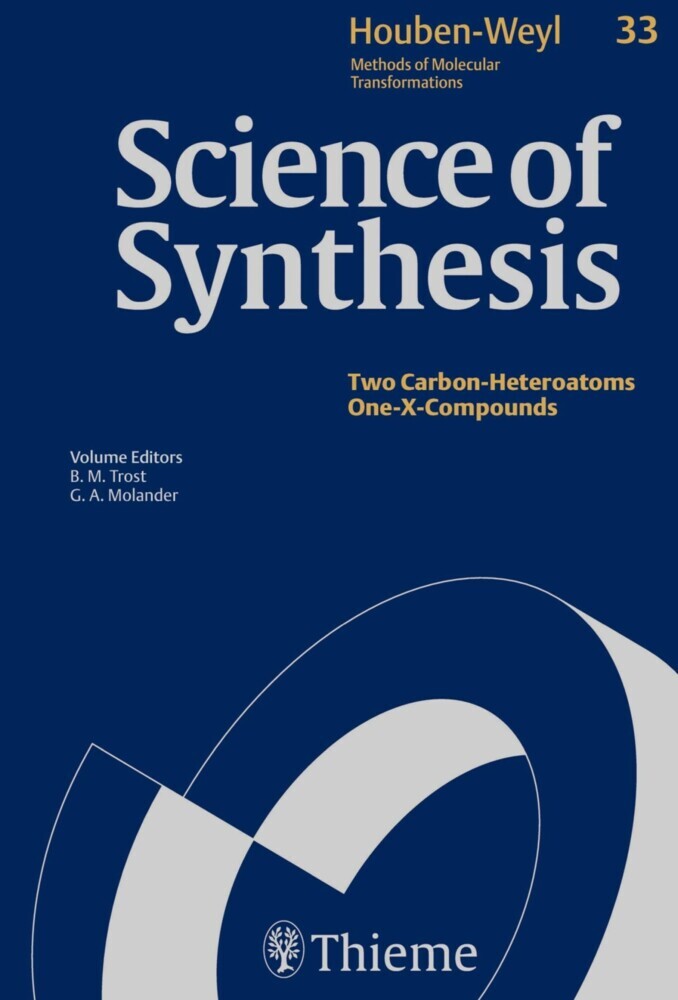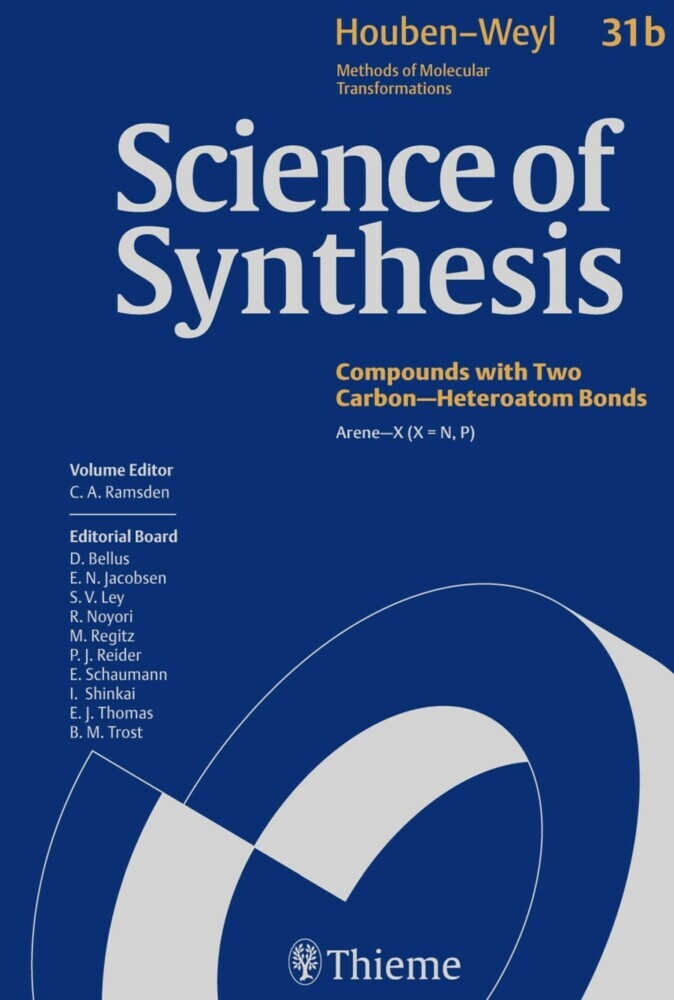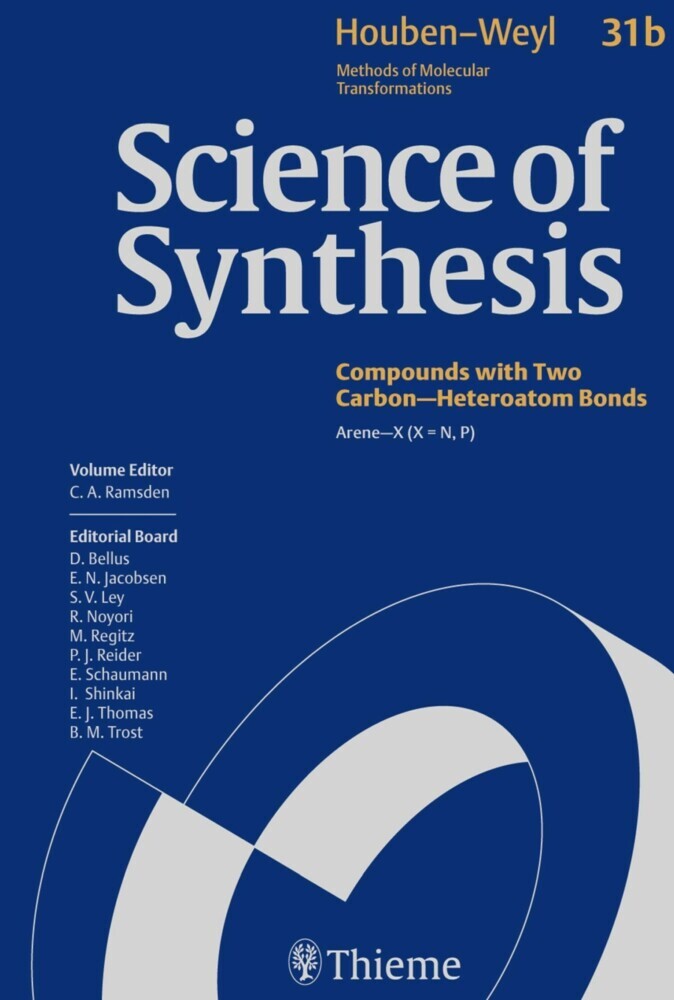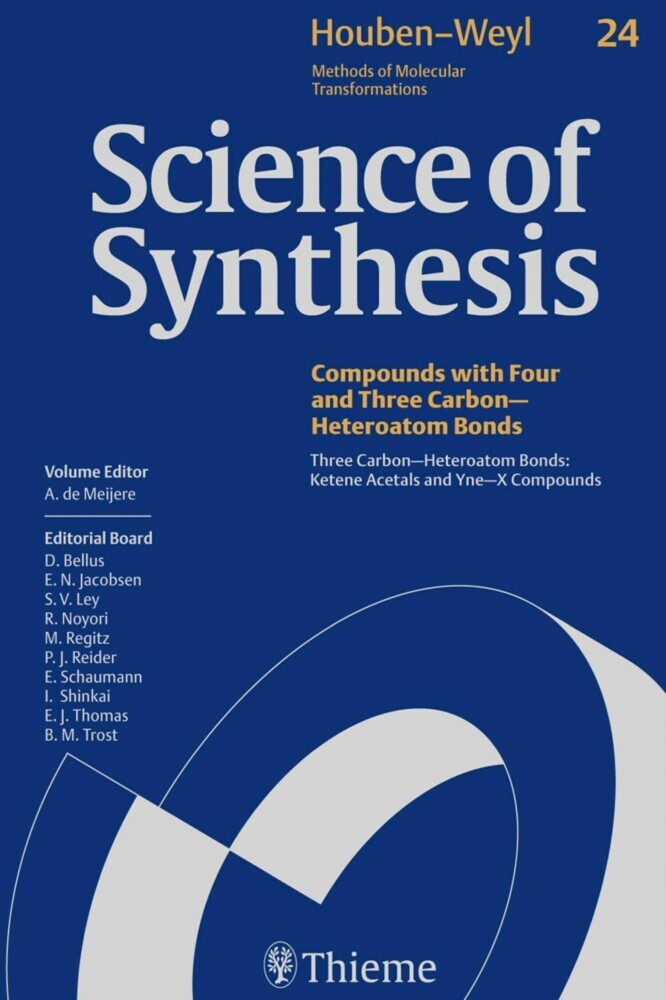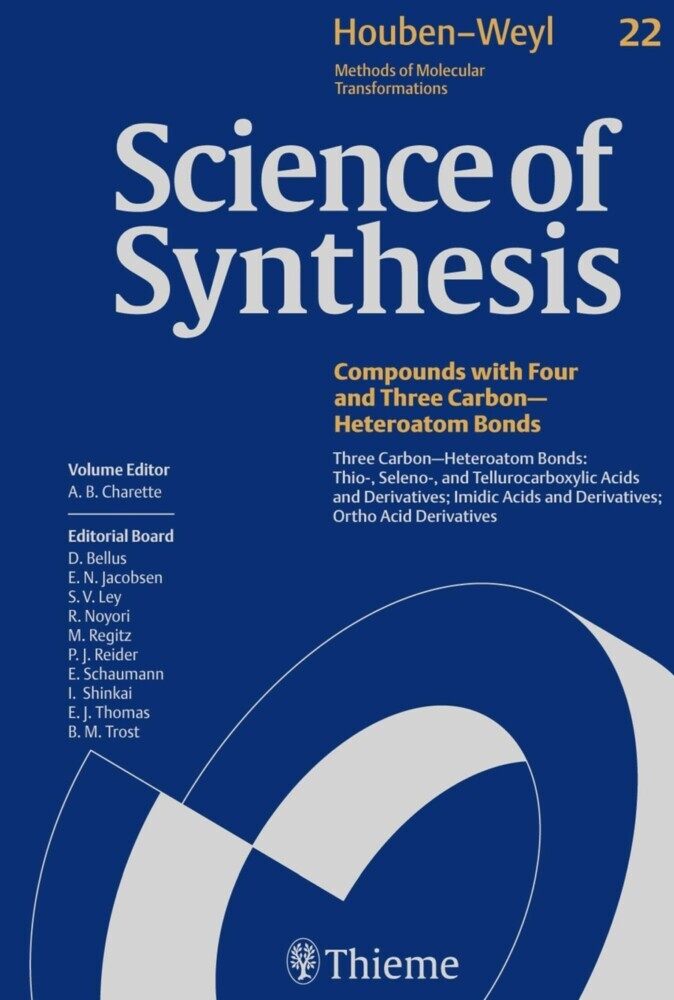Science of Synthesis: Houben-Weyl Methods of Molecular Transformations Vol. 40b
Amine N-Oxides, Haloamines, Hydroxylamines and Sulfur Analogues, and Hydrazines
Science of Synthesis: Houben-Weyl Methods of Molecular Transformations Vol. 40b
Amine N-Oxides, Haloamines, Hydroxylamines and Sulfur Analogues, and Hydrazines
Science of Synthesis: Houben-Weyl Methods of Molecular Transformations is the entirely new edition of the acclaimed reference series Houben-Weyl, the standard synthetic chemistry resource since 1909. This new edition is published in English and will comprise 48 volumes published between the years 2000 and 2008.
Science of Synthesis is a quality reference work developed by a highly esteemed editorial board to provide a comprehensive and critical selection of reliable organic and organometallic synthetic methods. This unique resource is designed to be the first point of reference when searching for a synthesis strategy.
- Contains the expertise of presently 400 leading chemists worldwide
- Critically evaluates the preparative applicability and significance of the synthetic methods
- Discusses relevant background information and provides detailed experimental procedures
For full information on the Science of Synthesis series, visit the Science of Synthesis Homepage.
Enders, Dieter
| ISBN | 9783131783714 |
|---|---|
| Article number | 9783131783714 |
| Media type | eBook - ePUB |
| Copyright year | 2014 |
| Publisher | Georg Thieme Verlag KG |
| Length | 532 pages |
| Language | English |
| Copy protection | Digital watermarking |

